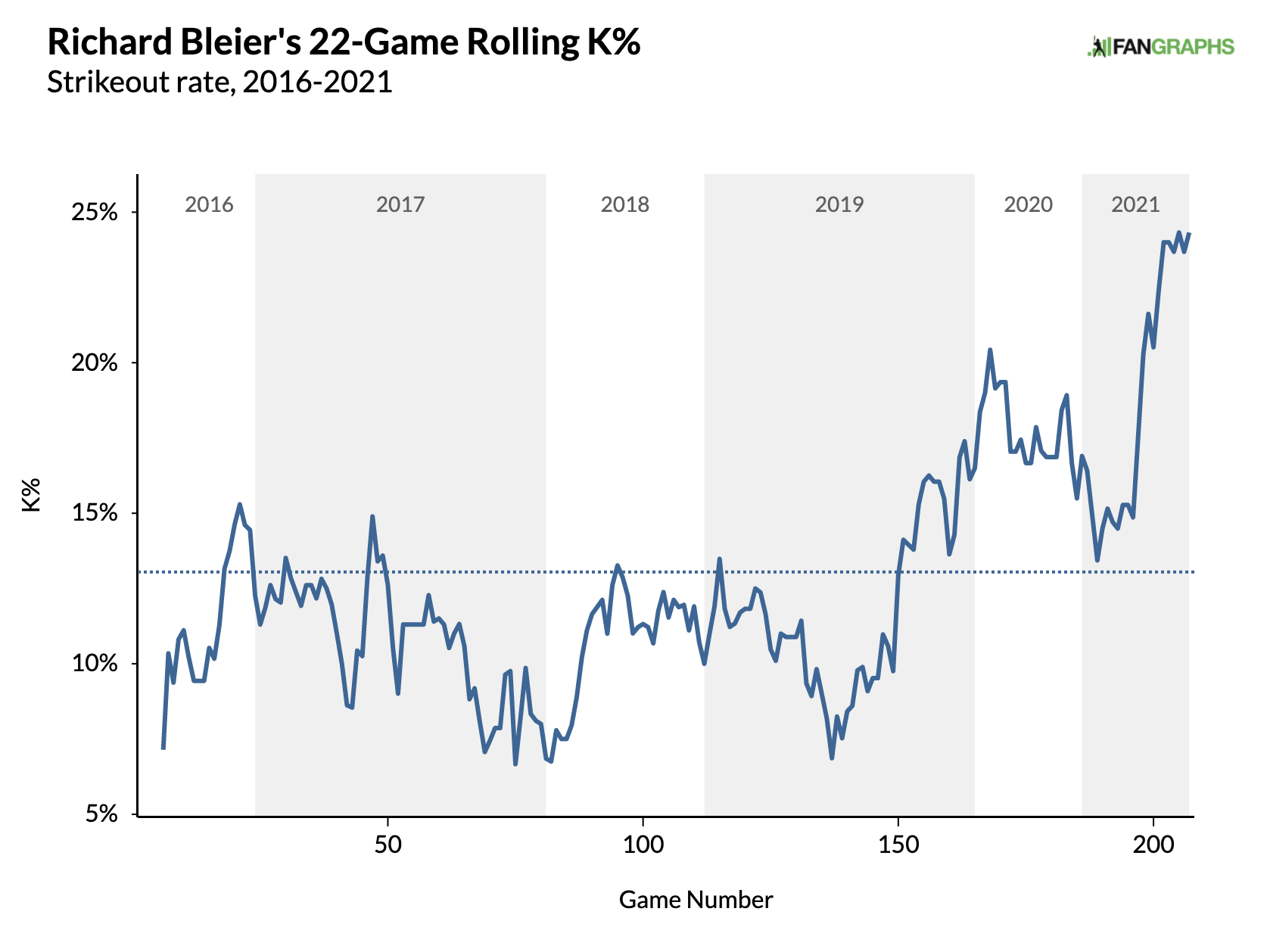Daily Prospect Notes: Top 100 Prospects List Update
Kevin Goldstein and I have updated the pro portion of the Top 100, which means we quickly reviewed the placement of players in the 50 FV tier and above, and considered who was not yet in those tiers but should be based on how they’ve looked during the first month of the 2021 season. I still have three total org audits to do — Milwaukee, Oakland and the Cubs — before I start peeling graduates off the list. Those will be completed shortly. You can find the updated list here.
Also, if you missed it, Kevin and I updated our draft rankings and posted a Mock Draft on Monday.
The lone change up near the top of the 100 is Riley Greene moving into the top 20; he’s in the mix with several other similarly-aged players with the talent to be consistent All-Stars, like Bobby Witt Jr., Julio Rodríguez, and Corbin Carroll.
DL Hall moved into the 55 FV tier on the strength of his stuff. He’s still walking a fairly high rate of opposing batters but just on the strength of his three plus pitches, could be a Haderesque relief weapon even if he can’t start. Read the rest of this entry »


